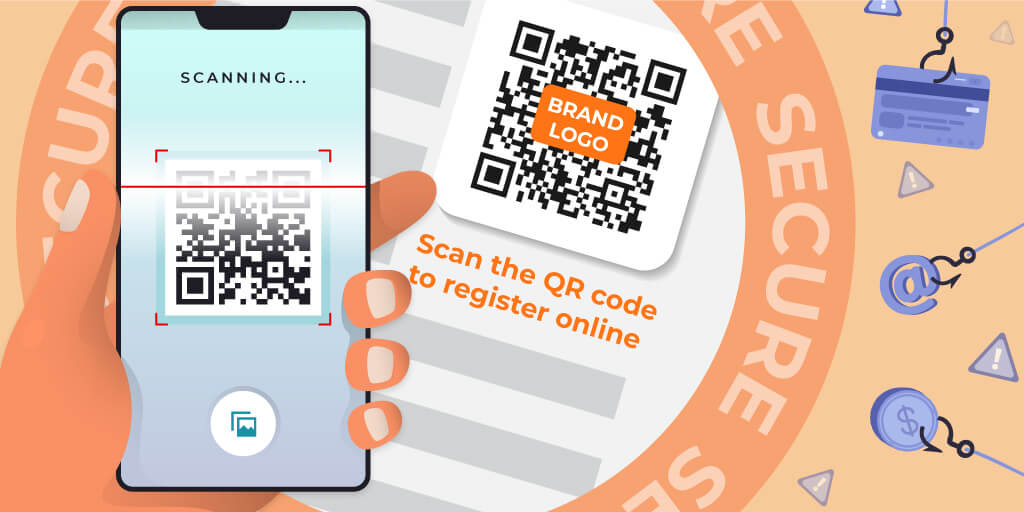Bolstering Consumer Confidence in Your Brand’s QR Codes

From contactless restaurant menus to print materials and TV commercials (including the infamous Coinbase Superbowl ad), QR codes are everywhere now. Again. The reason? They’re an easy, effective way for brands to engage with their audience, and adoption still seems to be growing.
eMarketer has reported, “In 2022, 83.4 million US adult smartphone users, representing 37.5% of smartphone users, will scan a QR code.” It also says, “This share will rise to 42.6% by 2025.”
As such, we’ve been seeing financial brands use QR codes in direct mail, credit applications and invoices and spotting QR codes as part of key CTAs in health care marketing materials. We’ve been using them with our own clients, as well, to drive traffic to important assets like merchant onboarding materials (webinar registrations and training videos) and Medicare plan comparisons.
Of course, where there’s opportunity to connect with an audience, there are nefarious players interested in diverting that traffic and potentially taking advantage of those consumers. Unfortunately, we’re seeing that now.
Earlier this year, for example, AARP warned its members about the proliferation of fake QR codes, pointing to an alert from the FBI that stated, “Cybercriminals are taking advantage of this technology by directing QR code scans to malicious sites to steal victim data, embedding malware to gain access to the victim’s device and redirecting payment for cybercriminal use.” Similarly, Mashable has published a “Beware the QR code scams” article and warned that fraudsters were covering legit QR codes with their own stickers – on parking meters, for example – and directing payments to scammers instead of parking authorities.
Despite these concerns, there is still great value in using QR codes in marketing. Marketing Charts recently illustrated data from The Drum / YouGov indicating that consumers in nearly every age group used marketing-related QR codes at rates approaching or surpassing 50%. The one exception? Older Americans. According to YouGov, some over 65 may find them difficult to navigate.
We don’t think these challenges should dampen marketers’ enthusiasm for QR codes, but we do urge brands to be mindful of them when planning and executing campaigns. In addition to considering whether your audience may need some extra guidance with the technology, it may be valuable to determine if some of your QR placements – like mass transit or vending machines, for example – may be vulnerable to tampering.
The good news is we can do something about it.
In cases where this type of interference and fraud is a concern, there are tactics you can deploy to help customers and prospects feel more confident scanning your QR codes. Some brands, for example, may choose to be more selective with placement of QR codes. They may avoid displaying the codes on publicly available signage (like bus shelter posters) and give preference instead to QR code use where tampering may be less likely (like a provider’s office).
Others will provide consumers with the information they need to scan with confidence. Customizing the QR code by placing the brand logo within it, for example, may offer consumers visual reassurance that the code has not been compromised. Putting CTAs and/or URLs adjacent to the QR codes can also help, by giving consumers an expectation about what they will experience after scanning. (In these cases, seeing anything else would serve as a warning for the user.)
Marketers can’t solve the fraud problem, but we can do the things in our power to help consumers decide the risk is low in most instances and avoid erosion of trust in this useful and engaging technology.




